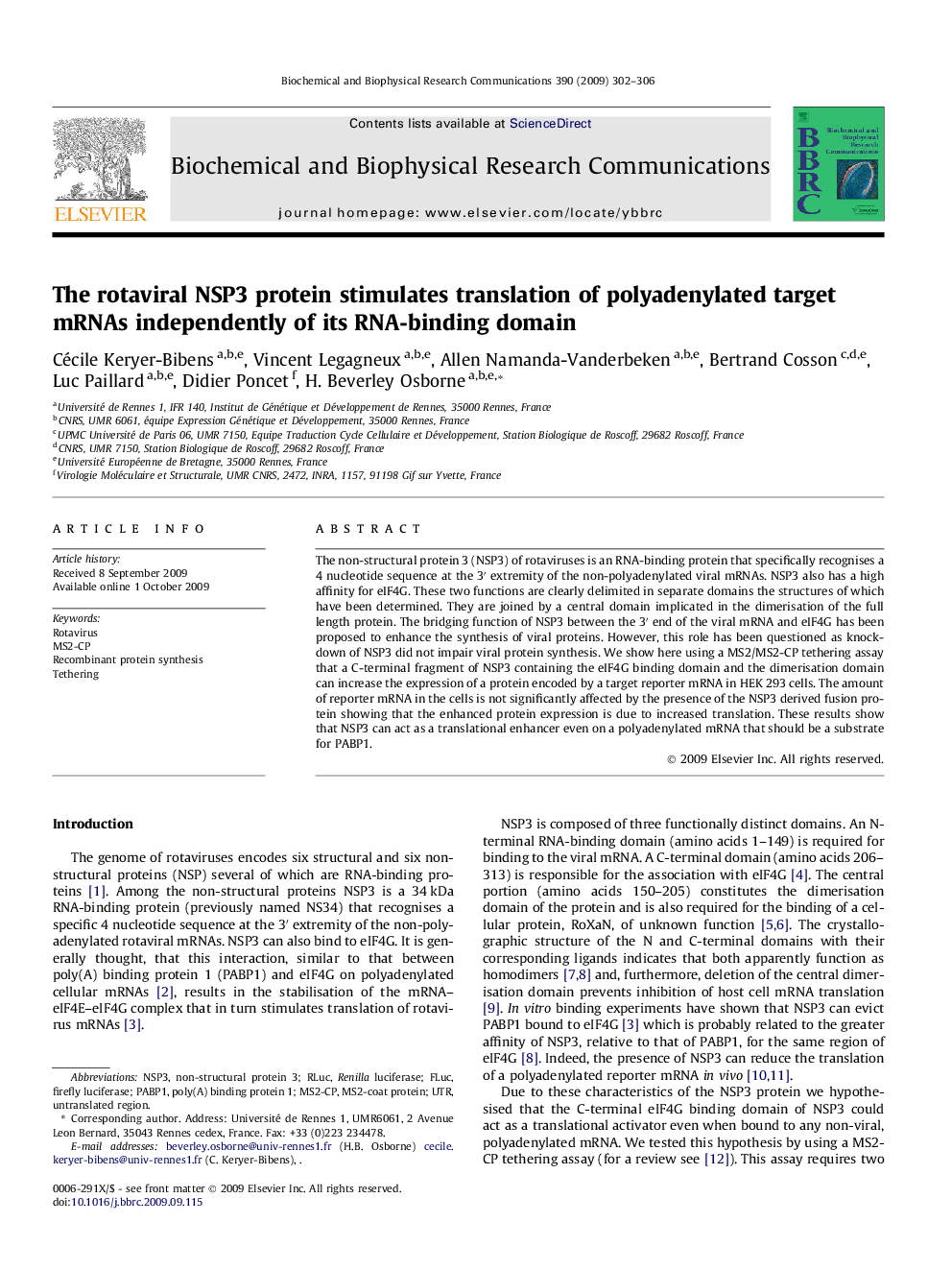| Article ID | Journal | Published Year | Pages | File Type |
|---|---|---|---|---|
| 1932768 | Biochemical and Biophysical Research Communications | 2009 | 5 Pages |
The non-structural protein 3 (NSP3) of rotaviruses is an RNA-binding protein that specifically recognises a 4 nucleotide sequence at the 3′ extremity of the non-polyadenylated viral mRNAs. NSP3 also has a high affinity for eIF4G. These two functions are clearly delimited in separate domains the structures of which have been determined. They are joined by a central domain implicated in the dimerisation of the full length protein. The bridging function of NSP3 between the 3′ end of the viral mRNA and eIF4G has been proposed to enhance the synthesis of viral proteins. However, this role has been questioned as knock-down of NSP3 did not impair viral protein synthesis. We show here using a MS2/MS2-CP tethering assay that a C-terminal fragment of NSP3 containing the eIF4G binding domain and the dimerisation domain can increase the expression of a protein encoded by a target reporter mRNA in HEK 293 cells. The amount of reporter mRNA in the cells is not significantly affected by the presence of the NSP3 derived fusion protein showing that the enhanced protein expression is due to increased translation. These results show that NSP3 can act as a translational enhancer even on a polyadenylated mRNA that should be a substrate for PABP1.
